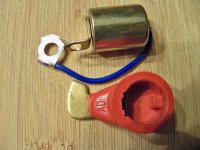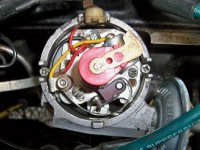What does a condenser do? I am asking because of my CRS disorder. When I was in high school, I had this really cool auto shop teacher and electronics teacher and the electronics guy would teach both.
Anyways, I thought I heard him say a condenser absorbs the static electrons being let go by the coil. That a condenser is only foil and paper rapped round in a circle and then grounded to let the static electrons to ground. He also said they go bad very rarely; and people waste money when they purchase points and condenser; they should only purchase points because the condenser technically matches the coil.
I am telling the story because I could easily be wrong, and wanted to know what others thought about the function of a condenser.
Randall love ya and miss you.
Anyways, I thought I heard him say a condenser absorbs the static electrons being let go by the coil. That a condenser is only foil and paper rapped round in a circle and then grounded to let the static electrons to ground. He also said they go bad very rarely; and people waste money when they purchase points and condenser; they should only purchase points because the condenser technically matches the coil.
I am telling the story because I could easily be wrong, and wanted to know what others thought about the function of a condenser.
Randall love ya and miss you.

 Hi Guest!
Hi Guest!

 smilie in place of the real @
smilie in place of the real @
 Pretty Please - add it to our Events forum(s) and add to the calendar! >>
Pretty Please - add it to our Events forum(s) and add to the calendar! >> 




